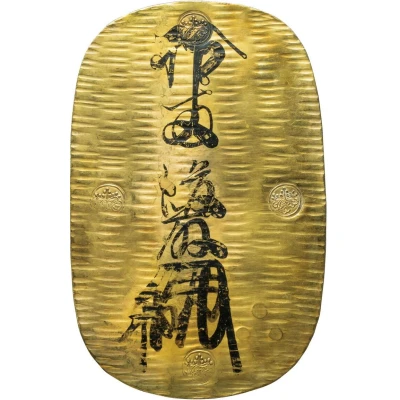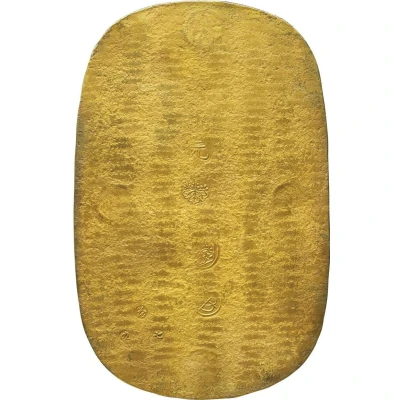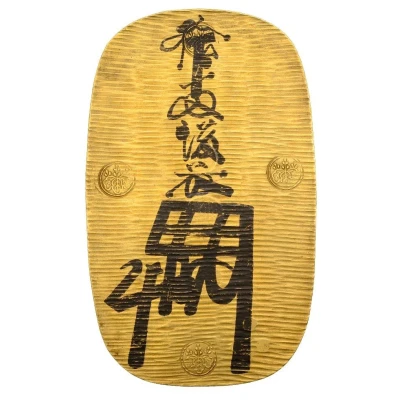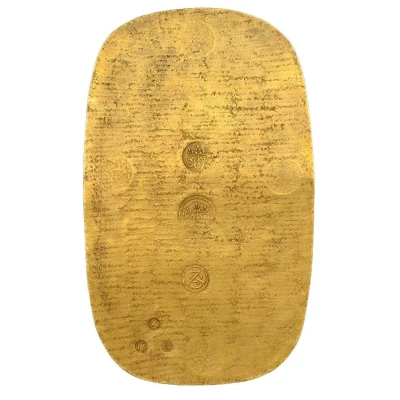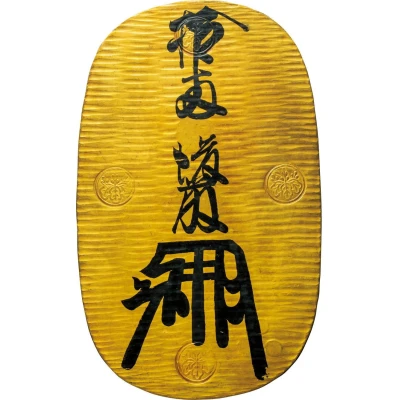
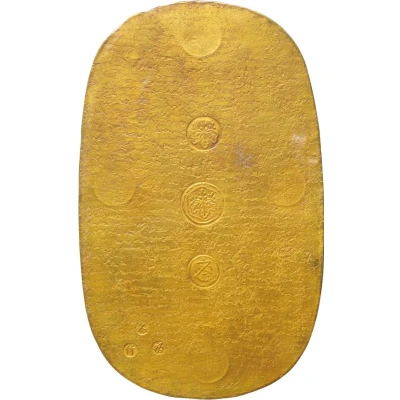

© Ginza Coins
Ōban "Kyо̄hо̄ Ōban" ND
| Gold (.676) (Silver (.324)) | 165.38 g | - |
| Issuer | Japan |
|---|---|
| Emperor | Nakamikado (1709-1735) Sakuramachi (1735-1747) Go-Momozono (1771-1779) Ninkō (1817-1846) |
| Empress | Go-Sakuramachi (1762-1771) |
| Type | Standard circulation coin |
| Years | 1725-1837 |
| Currency | Ōban (1588-1874) |
| Composition | Gold (.676) (Silver (.324)) |
| Weight | 165.38 g |
| Size | 153 × 94 mm |
| Shape | Oval |
| Orientation | Medal alignment ↑↑ |
| Demonetized | 30 May 1860 |
| Updated | 2024-10-05 |
| Numista | N#345305 |
|---|---|
| Rarity index | 97% |
Reverse
Three stamps vertically in the middle and three smaller stamps on the lower left.
Scripts: Chinese (traditional, regular script), Hiragana
Comment
The exchange of old о̄ban for new Kyо̄hо̄ Ōban coins began in June 1725 and continued until September of the following year.
Kyо̄hо̄ Ōban had market value of 7 Ryо̄ 2 Bu (7½ Ryо̄) of Kyо̄hо̄ koban & Kyо̄hо̄ 1 Bu-ban.
After Genbun koban were issued, Kyо̄hо̄ Ōban had market value of 10 Ryо̄ of Genbun koban.
8_515 were produced, but 15 of them being test pieces and were remelted. The rest of 8_500 were released for circulation.
Interesting fact
One interesting fact about the Ōban "Kyо̄hо̄ Ōban" ND (1725-1837) coin from Japan is that it was issued during a time of great economic change in Japan. The coin was introduced during the Kyoho era, which saw a shift from a feudal society to a more centralized and modernized economy. The Ōban coin was used as a standard unit of currency during this time and was valued at 165.38 grams of gold and silver. This coin is a unique piece of Japanese history and a testament to the country's economic development during this period.
Price
| Date | Mintage | VG | F | VF | XF | AU | UNC |
|---|---|---|---|---|---|---|---|
| ND (1725-1837) | 8515 | - | - | - | - | - | - |
Values in the table are based on evaluations by sales realized on Internet platforms. They serve as an indication only for Ōban "Kyо̄hо̄ Ōban" ND (1725-1837) coin.
